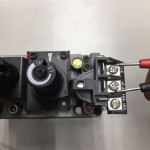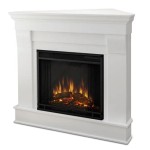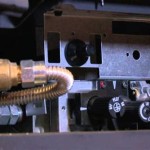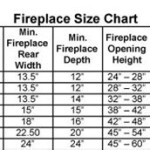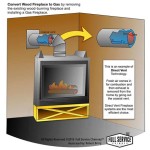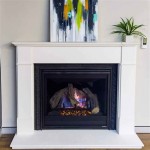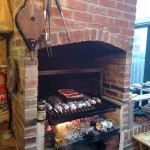Adding a Gas Fireplace to Your House: A Comprehensive Guide
A gas fireplace can be a desirable addition to a home, offering both aesthetic appeal and supplemental heating. Unlike traditional wood-burning fireplaces, gas fireplaces provide convenience and efficiency. They eliminate the need for firewood hauling, storage, and cleanup, and they offer precise temperature control. Understanding the considerations involved in adding a gas fireplace is crucial for ensuring a smooth and safe installation.
The process involves several stages, beginning with planning and selection, followed by installation, and concluding with maintenance. Each stage requires careful attention to detail and adherence to relevant building codes and safety regulations. This article provides an overview of the key aspects involved in adding a gas fireplace to a house.
Key Point 1: Planning and Selection
The initial phase focuses on determining the feasibility of installing a gas fireplace and selecting the appropriate model. Several factors should be considered, including the fireplace's intended location, venting options, gas line access, and the desired aesthetic. A thorough assessment of these elements will inform the selection process and prevent potential complications during installation.
Location: The location of the gas fireplace significantly impacts the installation process and cost. Existing fireplaces are an ideal location for retrofitting with a gas insert, offering pre-existing venting and structural support. If installing a new fireplace in a different location, it is important to consider factors such as proximity to exterior walls for venting and structural requirements for supporting the fireplace unit. Corner installations and wall-mounted units can offer unique design possibilities but might require more complex venting solutions.
Venting Options: Gas fireplaces require proper venting to safely exhaust combustion byproducts. There are primarily three types of venting systems: direct vent, B-vent, and vent-free. Direct vent systems are the most common and safest option, drawing combustion air from outside and exhausting fumes directly outside through a sealed system. B-vent systems use existing chimneys or dedicated vent pipes, relying on natural draft for exhaust. Vent-free systems, while seemingly convenient, are generally not recommended due to concerns about indoor air quality and are often restricted by local building codes. Understanding the venting requirements is essential for ensuring safe and compliant installation.
Gas Line Access: Access to a natural gas or propane line is critical for operating a gas fireplace. If a gas line is not readily available at the desired location, a qualified plumber or gas technician will need to install one. This may involve running a new line from the main gas meter, which can add to the overall cost of the project. The size and capacity of the gas line must also be sufficient to meet the fireplace's gas consumption requirements. A gas line that is too small can result in inadequate flame and reduced heating performance.
Fireplace Models: Gas fireplaces are available in a variety of styles, sizes, and heat outputs. Gas logs are a popular choice for retrofitting existing wood-burning fireplaces, offering a realistic flame appearance without the mess of wood. Gas inserts are self-contained units that fit inside an existing fireplace opening, providing efficient heating and a clean aesthetic. Freestanding gas stoves offer a blend of traditional and contemporary designs, suitable for adding a focal point to a room. Wall-mounted units provide a modern, space-saving option. When selecting a model, it is important to consider the heating needs of the space and the desired aesthetic.
Key Point 2: Installation Process
Proper installation is crucial for the safe and efficient operation of a gas fireplace. It is essential to hire qualified professionals, including a licensed gas fitter and, depending on local requirements, a building inspector. Adhering to building codes and manufacturer's instructions is paramount to avoid hazards and ensure compliance. The installation process typically involves several steps.
Permitting: Before commencing any work, obtain the necessary permits from the local building department. Permitting ensures that the installation meets all applicable safety standards and regulations. The permitting process may require submitting detailed plans and specifications for the fireplace and venting system.
Gas Line Connection: A licensed gas fitter must handle the gas line connection. This involves tapping into the existing gas line, running a new line to the fireplace location, and connecting it to the fireplace unit. The gas line must be properly sized and pressure-tested to ensure leak-free operation. Safety valves and shut-off mechanisms should be installed for emergency situations.
Venting Installation: The venting system must be installed according to the manufacturer's instructions and local building codes. Direct vent systems require precise installation of the vent pipes, ensuring proper sealing and clearances. B-vent systems require inspection of the chimney or vent pipe to ensure it is in good condition and free of obstructions. Vent-free systems, if permitted, require careful calibration and monitoring to ensure proper combustion.
Fireplace Placement and Securing: The fireplace unit must be properly positioned and secured according to the manufacturer's guidelines. This may involve reinforcing the floor or wall to support the weight of the unit. Clearances to combustible materials must be maintained to prevent fire hazards. Non-combustible materials, such as cement board, must be used as a barrier between the fireplace and any nearby flammable surfaces.
Testing and Inspection: Once the installation is complete, the gas fireplace should be thoroughly tested to ensure proper operation. This includes checking for gas leaks, verifying the flame pattern, and confirming that the venting system is functioning correctly. A building inspector may need to inspect the installation to ensure compliance with building codes and regulations.
Key Point 3: Maintenance and Safety
Regular maintenance is essential for ensuring the safe and efficient operation of a gas fireplace. Periodic inspections and cleaning can prevent malfunctions and extend the lifespan of the unit. Safety precautions should always be observed when operating and maintaining a gas fireplace.
Annual Inspections: Schedule annual inspections with a qualified technician to check the gas line, venting system, and burner components. The technician can identify and address any potential issues, such as gas leaks, cracked vent pipes, or malfunctioning controls. Regular inspections can help prevent costly repairs and ensure the safe operation of the fireplace.
Cleaning: Clean the glass front of the fireplace regularly to remove soot and buildup. Use a mild glass cleaner and a soft cloth. Avoid using abrasive cleaners, as they can scratch the glass. Clean the burner assembly periodically to remove dust and debris. Consult the manufacturer's instructions for specific cleaning recommendations.
Carbon Monoxide Detectors: Install carbon monoxide detectors in the vicinity of the gas fireplace. Carbon monoxide is a colorless and odorless gas that can be produced by incomplete combustion. Functioning carbon monoxide detectors provide an early warning of dangerous levels of carbon monoxide, allowing for prompt evacuation and ventilation.
Proper Ventilation: Ensure adequate ventilation in the room where the gas fireplace is installed. This helps to circulate fresh air and prevent the buildup of carbon monoxide. Do not block or obstruct the air vents on the fireplace unit.
Operating Instructions: Familiarize oneself with the operating instructions for the gas fireplace. Understand how to turn the unit on and off, adjust the flame height, and troubleshoot common issues. Keep the operating instructions readily available for reference.
Adding a gas fireplace to a house is a significant investment that requires careful planning and execution. By considering the factors outlined in this article, homeowners can ensure a safe, efficient, and aesthetically pleasing addition to their home. Consulting with qualified professionals and adhering to local building codes and safety regulations are paramount throughout the process.

Adding A Gas Fireplace To An Existing Home Just Log Fires

Adding A Fireplace To Existing Home Where For Fireplaces

Install A Gas Fireplace Framing Finishing Pt 2 Diy Living Room Remodel

Tips For Adding A Gas Fireplace To Your Home St Louis Hvac
10 Reasons To Add A Gas Fireplace Your Home Heat Glo
10 Reasons To Add A Gas Fireplace Your Home Heat Glo

Does A Fireplace Add Value To House Vertical Chimney Care

Convert To Gas Installing Fireplace Inserts Doctor Flue

Adding A Gas Fireplace To 100 Year Old Home Homeowner S Perspecti Fireside Hearth

How To Install A Gas Fireplace With Tile Surround And Wood Mantel Sima Spaces

